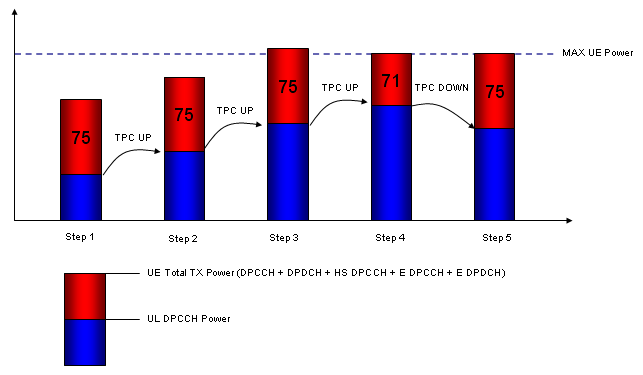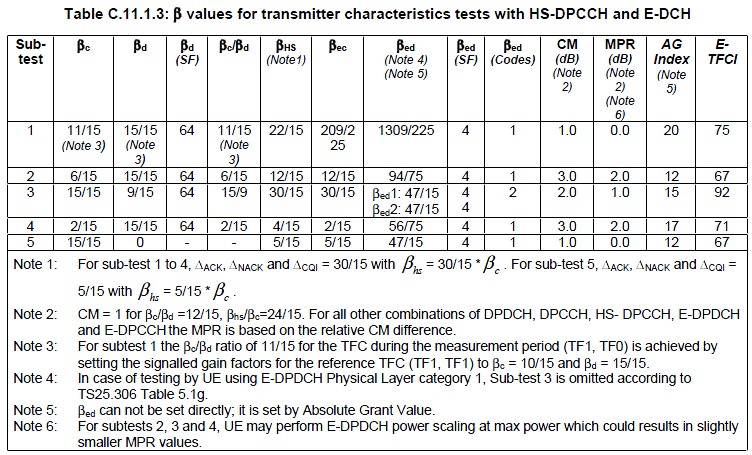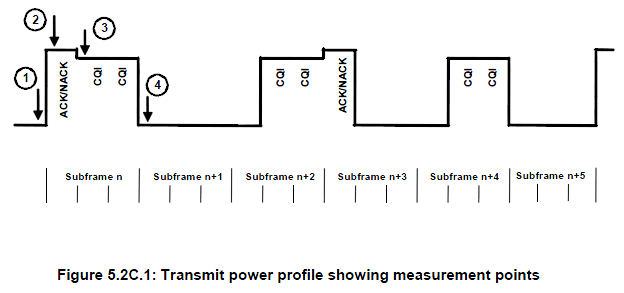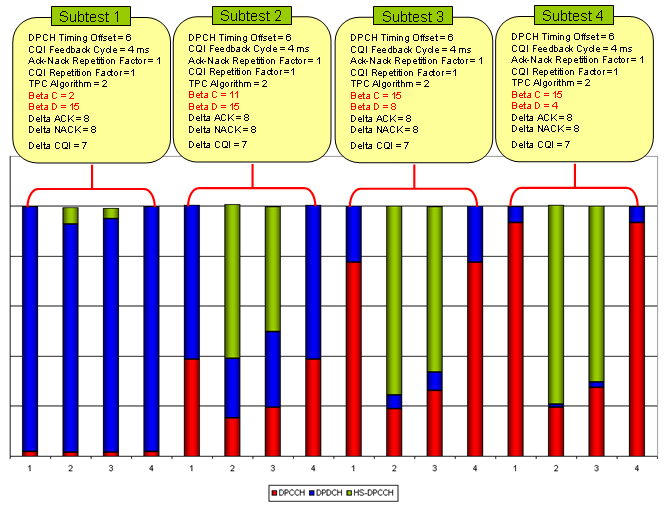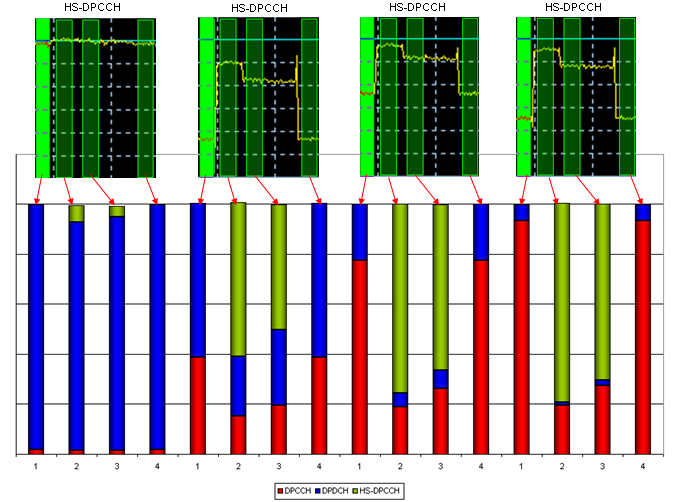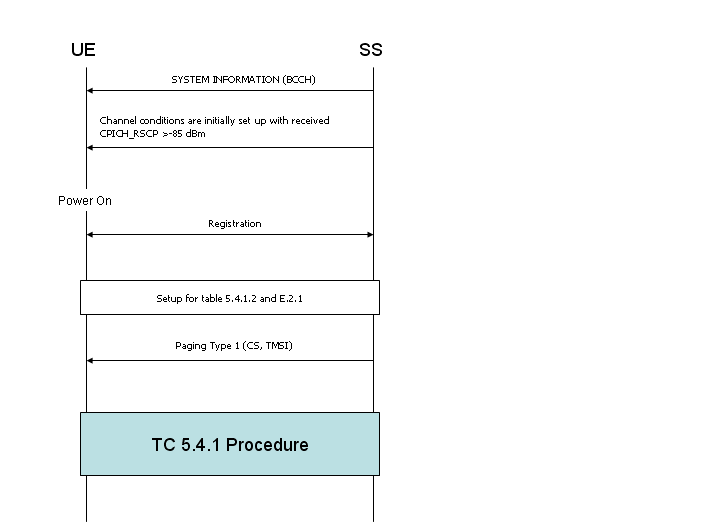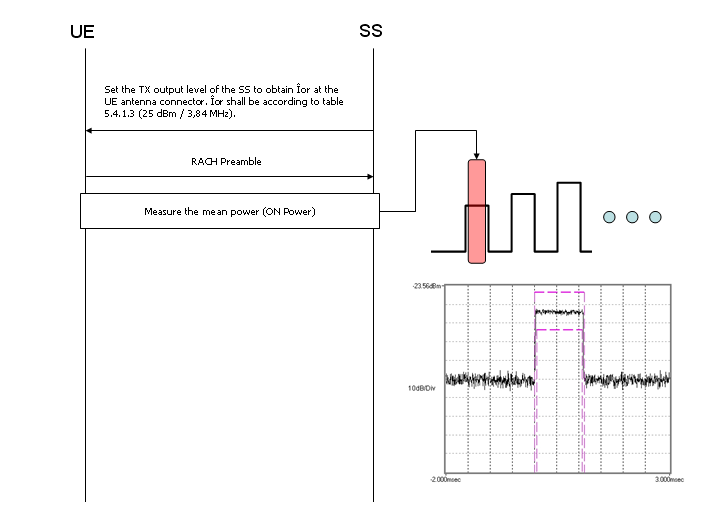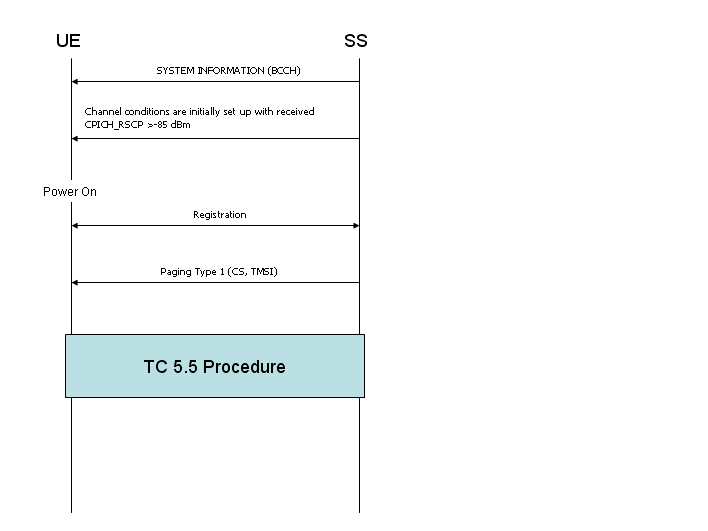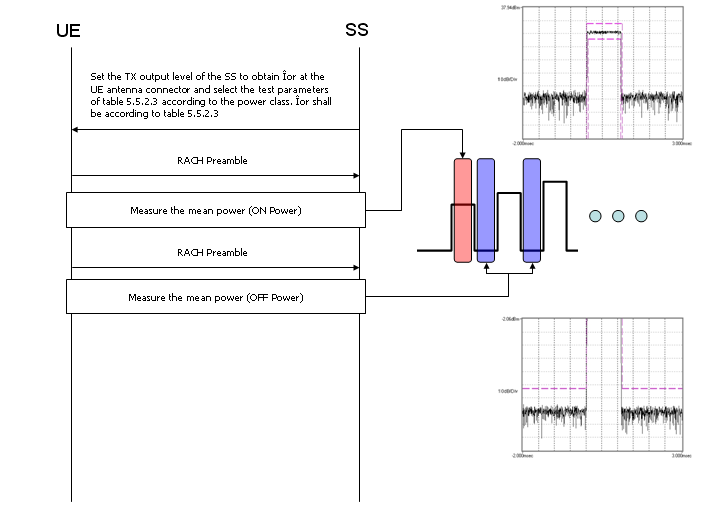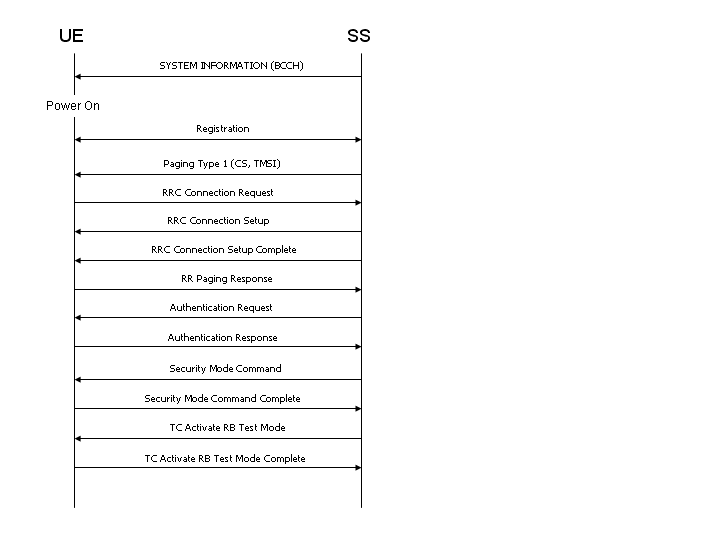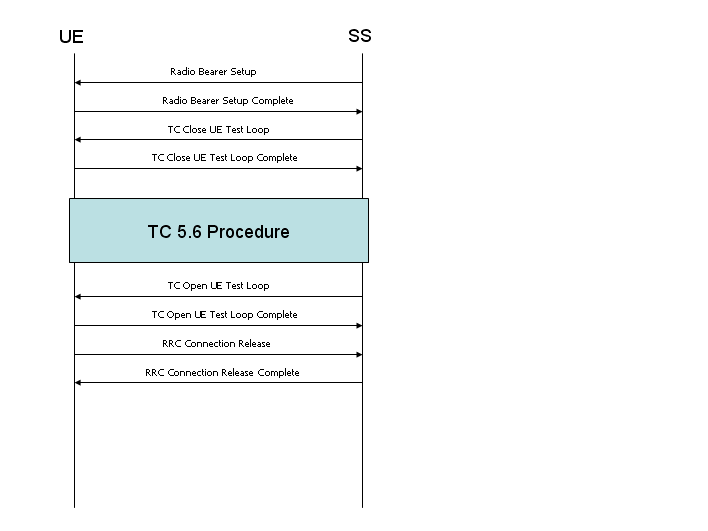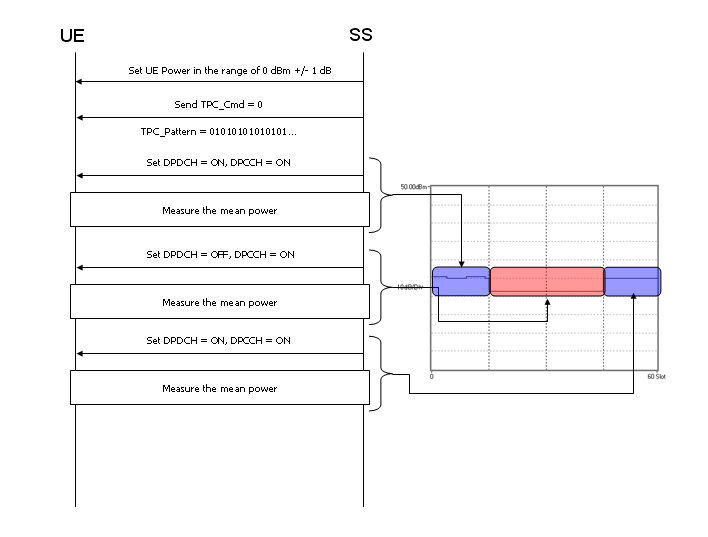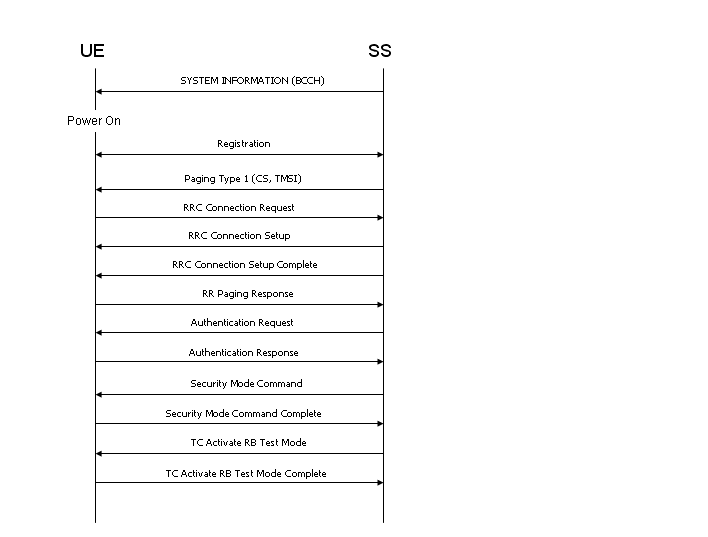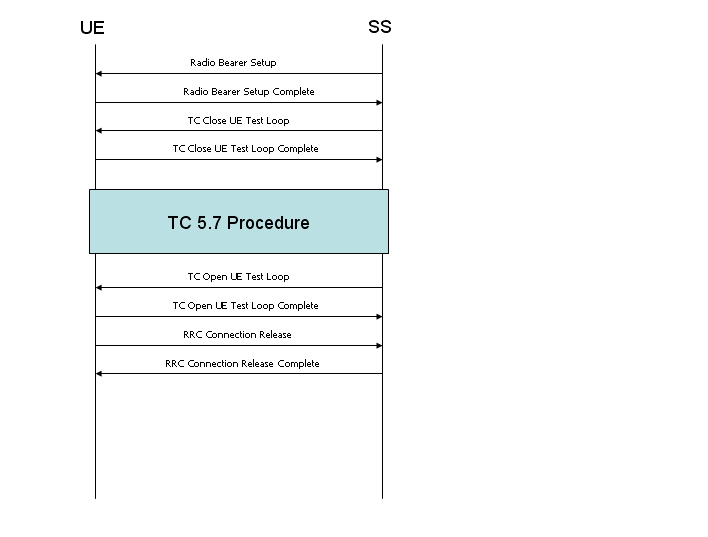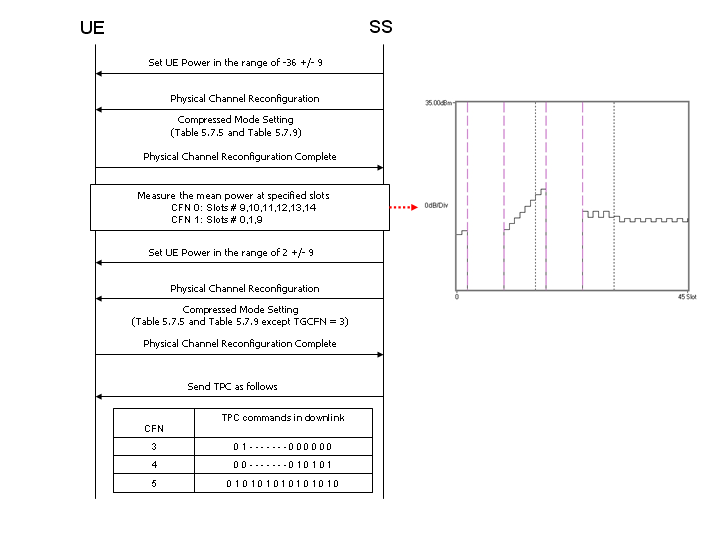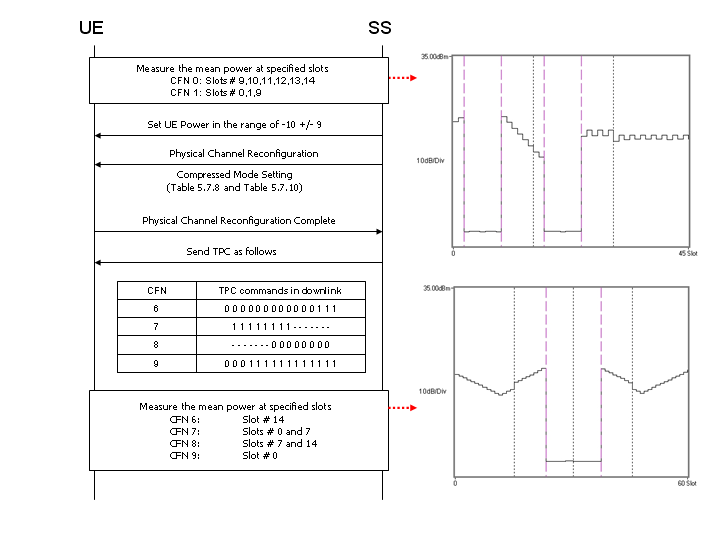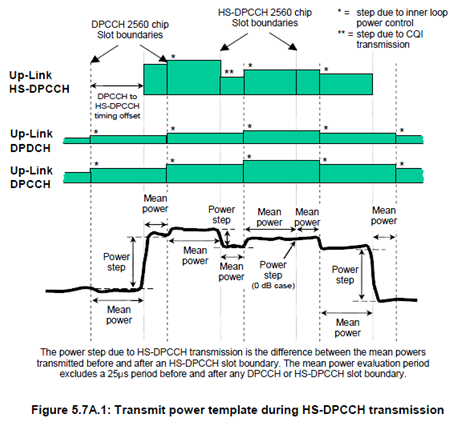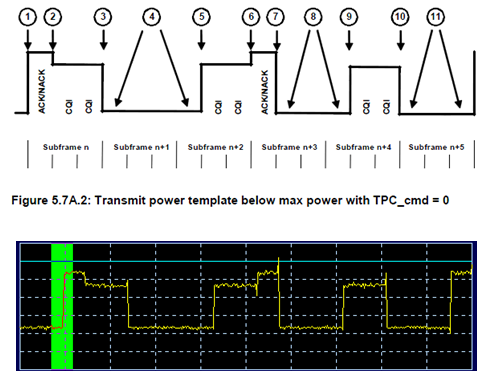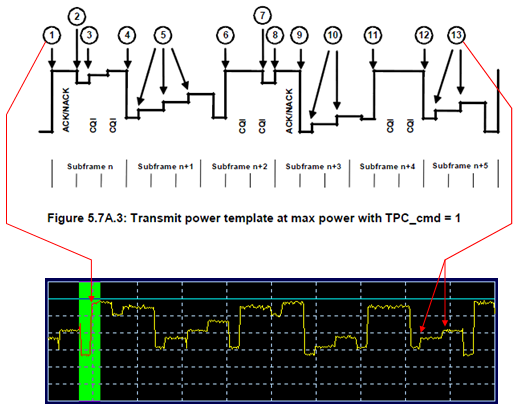|
3G/UMTS |
|||||||||||||||||||||||||||||||||||||||||||||||||||||||||||||||||||||||||||||||||||||||||||||||||||||||||||||||||||||||||||||||||||||||||||||||||||||||||||||||||||||||||||||||||||||||||||||||||||||||||||||||||||||||||||||||||||||||||||||||||||||||||||||||||||||||||||||||||||||||||||||||||||||||||||||||||||||||||||||||||||||||||||||||||||||||||||||||||||||||||||||||||||||||||||||||||||||||||||||||||||||||||||||||||||||||||||||||||||||||||||||||||||||||||||||||||||||||||||||||||||||||||
|
RF Measurement
In this page, I will try to describe UMTS RF measurement procedure ( Purpose, Meaning of the test, Interpretation of the result) in my own language and in my understanding.
34.521 (RF Conformance) Test Case List
< 5. Transmitter Characteristics >
< 6. Reciever Characteristics >
< 7. Performance Requirements >
For the details of each HSET, refer to 3GPP TS 25.101 Annex A.7”.
5.2B Maximum Output Power with HS-DPCCH and E-DCH
This test is to test HSUPA Max Tx power while UE transmit UL DPCCH, HS-DPCCH, E-DPCCH, E-DPDCH, but for this UE has to meet the following criteria. i) UE TX power should not go higher than MAX UE Power (Max Allowed UE Power) ii) UE has to be able to change E-TFCI value to keep its total power under MAX UE power. iii) UE should use the Maximum possible E-TFCI in any condition.
Following plot is to show a overall procedure for [subtest 1], but other subtests are also working in similar way. Only specific TFCI condition and Power Offset conditions are different. Here you see 5 steps but only the first step and last step is fixed and other steps between them is for adjusting the measurement conditions. so number of steps between the first and last step may vary depending on situation or UE. Step 1 : Equipment send TPC commands so that UE maitains the TX power way below than the MAX UE Power (MAX allowed UE power). In this case, UE is using the largest E-TFCI since the space between current TX power and Max UE power is large enough to accommodate the E-TFCI. Step 2 : Equipement send TPC UP command and UE sets DPCCH power incremented by 1 dB, but there is still enough space from MAX UE power. So UE is using the Max E-TFCI. Step 3 : Equipement send TPC UP command and UE sets DPCCH power incremented by 1 dB, but there is barely enough space from MAX UE power. So UE is still using the Max E-TFCI. Step 4 : Equipement send TPC UP command and UE sets DPCCH power incremented by 1 dB, but now the space from MAX UE power is not enough to accommodate the Max E-TFCI. So UE select a little lower TFCI which can be accommodated by the remaining power space. Step 5 : Now Equipment send TPC DOWN command and UE sets DPCCH power decremented by 1 dB and this would give back the enough power space to accommodate the MAX E-TFCI and UE select the MAX E-TFCI again. And the equipment measure total TX power at this step and use it as pass/fail criteria.
[Common Configuration]
1. Set DPCH Timing Offset = 6 2. Set Maximum Allowed UL TX Power = 21.0 dBm. 3. Set HSUPA TTI = 10ms and Modulation = QPSK 4. Set HS-DPCCH as follows.
5. Set TPC Algorithm = Algorithm 2 6. Select Fixed Reference Channel H-Set1 (QPSK)
[Subtest1]
1. Set Delta CQI = 8 2. Set Absolute Grant = 12 3. Set E-TFCI As follows.
4. Set Beta C, Beta D, Delta ACK, Delta NAC, Delta CQI, Delta E-DPCCH as follows. (Note : This is to meet 34.121 Table C 11.1.3 requirement. Delta ACK, Delta NAC, Delta CQI are set in such way that HS-DPCCH is being transmitted with a flat power)
5. Send TPC so that UE transmit power is 16 dBm (which is lower than it's max power by 7.5 dB) and maintain the same power. 6. Wait 150 ms until the UE power becomes 16.0 dBm. 7. Do HSUPA Throughput measurement and confirm the E-TFCI measurement result is 75. 8. TPC_cmd = +1 and wait 150 ms. 9. Do HSUPA Throughput measurement and confirm the E-TFCI measurement result is 75. 10. Repeat step 8 to 9 until the E-TFCI measurement result is not 75. 11. TPC_cmd = -1 12. Do HSUPA Throughput measurement and confirm the E-TFCI measurement result is 75 again. 13. TPC_cmd = -1 and wait 150 ms. 14. Do HSUPA Throughput measurement and confirm the E-TFCI measurement result is 75. 15. Repeat step 13 to 14 until the E-TFCI measurement result is not 75. 16. Measure the UE Tx power and check if it is +24dBm (Tolerance +1.7/–6.7 dB).
[Subtest2]
1. Set Delta CQI = 8 2. Set Absolute Grant = 20 3. Set E-TFCI As follows.
4. Set Beta C, Beta D, Delta ACK, Delta NAC, Delta CQI, Delta E-DPCCH as follows. (Note : This is to meet 34.121 Table C 11.1.3 requirement. Delta ACK, Delta NAC, Delta CQI are set in such way that HS-DPCCH is being transmitted with a flat power)
5. Send TPC so that UE transmit power is 16 dBm and maintain the same power. 6. Wait 150 ms until the UE power becomes 14.0 dBm. 7. Do HSUPA Throughput measurement and confirm the E-TFCI measurement result is 67. 8. TPC_cmd = +1 and wait 150 ms. 9. Do HSUPA Throughput measurement and confirm the E-TFCI measurement result is 67 10. Repeat step 8 to 9 until the E-TFCI measurement result is not 67. 11. TPC_cmd = -1 12. Do HSUPA Throughput measurement and confirm the E-TFCI measurement result is 67 again. 13. TPC_cmd = -1 and wait 150 ms. 14. Do HSUPA Throughput measurement and confirm the E-TFCI measurement result is 67. 15. Repeat step 13 to 14 until the E-TFCI measurement result is not 67. 16. Measure the UE Tx power and check if it is +23dBm (Tolerance +2.7/–5.2 dB).
[Subtest3]
1. Set Delta CQI = 8 2. Set Absolute Grant = 15 3. Set E-TFCI As follows.
4. Set Beta C, Beta D, Delta ACK, Delta NAC, Delta CQI, Delta E-DPCCH as follows. (Note : This is to meet 34.121 Table C 11.1.3 requirement. Delta ACK, Delta NAC, Delta CQI are set in such way that HS-DPCCH is being transmitted with a flat power)
5. Send TPC so that UE transmit power is 15 dBm 6. Wait 150 ms until the UE power becomes 15.0 dBm. 7. Do HSUPA Throughput measurement and confirm the E-TFCI measurement result is 92. 8. TPC_cmd = +1 and wait 150 ms. 9. Do HSUPA Throughput measurement and confirm the E-TFCI measurement result is 92 10. Repeat step 8 to 9 until the E-TFCI measurement result is not 92. 11. TPC_cmd = -1 12. Do HSUPA Throughput measurement and confirm the E-TFCI measurement result is 92 again. 13. TPC_cmd = -1 and wait 150 ms. 14. Do HSUPA Throughput measurement and confirm the E-TFCI measurement result is 92. 15. Repeat step 13 to 14 until the E-TFCI measurement result is not 92. 16. Measure the UE Tx power and check if it is +23dBm (Tolerance +2.7/–5.2 dB).
[Subtest4]
1. Set Delta CQI = 8 2. Set Absolute Grant = 17 3. Set E-TFCI As follows.
4. Set Beta C, Beta D, Delta ACK, Delta NAC, Delta CQI, Delta E-DPCCH as follows. (Note : This is to meet 34.121 Table C 11.1.3 requirement. Delta ACK, Delta NAC, Delta CQI are set in such way that HS-DPCCH is being transmitted with a flat power)
5. Send TPC so that UE transmit power is 16 dBm and maintain the same power. 6. Wait 150 ms until the UE power becomes 14.0 dBm. 7. Do HSUPA Throughput measurement and confirm the E-TFCI measurement result is 71. 8. TPC_cmd = +1 and wait 150 ms. 9. Do HSUPA Throughput measurement and confirm the E-TFCI measurement result is 71 10. Repeat step 8 to 9 until the E-TFCI measurement result is not 71. 11. TPC_cmd = -1 12. Do HSUPA Throughput measurement and confirm the E-TFCI measurement result is 71 again. 13. TPC_cmd = -1 and wait 150 ms. 14. Do HSUPA Throughput measurement and confirm the E-TFCI measurement result is 71. 15. Repeat step 13 to 14 until the E-TFCI measurement result is not 71. 16. Measure the UE Tx power and check if it is +22dBm (Tolerance +3.7/–5.2 dB).
[Subtest5 –upto v8.7.0]
1. Set Delta CQI = 8 2. Set Absolute Grant = 21 3. Set E-TFCI As follows.
4. Set Beta C, Beta D, Delta ACK, Delta NAC, Delta CQI, Delta E-DPCCH as follows. (Note : This is to meet 34.121 Table C 11.1.3 requirement. Delta ACK, Delta NAC, Delta CQI are set in such way that HS-DPCCH is being transmitted with a flat power)
5. Send TPC so that UE transmit power is 16 dBm and maintain the same power. 6. Wait 150 ms until the UE power becomes 16.0 dBm. 7. Do HSUPA Throughput measurement and confirm the E-TFCI measurement result is 81. 8. TPC_cmd = +1 and wait 150 ms. 9. Do HSUPA Throughput measurement and confirm the E-TFCI measurement result is 81 10. Repeat step 8 to 9 until the E-TFCI measurement result is not 81. 11. TPC_cmd = -1 12. Do HSUPA Throughput measurement and confirm the E-TFCI measurement result is 81 again. 13. TPC_cmd = -1 and wait 150 ms. 14. Do HSUPA Throughput measurement and confirm the E-TFCI measurement result is 81. 15. Repeat step 13 to 14 until the E-TFCI measurement result is not 81. 16. Measure the UE Tx power and check if it is +24dBm (Tolerance +1.7/–6.7 dB).
[Subtest5 –since v8.8.0]
1. Set Delta CQI = 8 2. Set Absolute Grant = 12 3. Set E-TFCI As follows.
4. Set Beta C, Beta D, Delta ACK, Delta NAC, Delta CQI, Delta E-DPCCH as follows. (Note : This is to meet 34.121 Table C 11.1.3 requirement. Delta ACK, Delta NAC, Delta CQI are set in such way that HS-DPCCH is being transmitted with a flat power)
5. Send TPC so that UE transmit power is 16 dBm and maintain the same power. 6. Wait 150 ms until the UE power becomes 16.0 dBm. 7. Send TPC ALL 1 so that UE transmit power is its Max power. 8. Wait 150 ms until the UE power becomes its Max Power. 9. Measure the UE Tx power and check if it is +24dBm (Tolerance +1.7/–6.7 dB).
5.2C UE Relative Code Domain Power Accuracy (Release 6 and later)
Even when total UE TX power stay constant, each component physical channel power should vary dynamically depending on the channel composition. The component of Uplink transmission signal with HSDPA environment are as follows :
Once connection is made, U DPCCH + U DPDCH is always being transmitted, but HS-DPCCH transmission varies depending on configuration. For example, when there is no HS-DPCCH being transmitted, DPCCH + DPDCH power would increase to fill the power space where HS-DPCCH used to take up and when there is HS-DPCCH being transmitted, DPCCH + DPDCH power would decrease to make enough space for the HS-DPCCH to fill in.
Even when the composition of Uplink power is same, the portions of the power for each channel can vary with the following configuration.
Depending on the factors described above, uplink power profile in the time domain may look as follows. This test cases measures each of the channel power at the following four points depending on each subtest configuration. (The point labeled (1), (2), (3), (4) is the point where the power is measured).
The reason why the Transmit Power Profile become like this can be illustrated as follows.
Following is the measurement result for each subtest. Each bar represents the relative power for each component channels (DPCCH, DPDCH, HS-DPCCH)
5.4.1 Open Loop Power Control in the Uplink
5.7 Power setting in uplink compressed mode
The transmission of Ack/Nack or CQI over the HS-DPCCH may cause the transmission power in the uplink to vary and the ratio of the amplitude between the DPCCH and the Ack/Nack and CQI respectively is signalled by higher layers
The nominal sum power on DPCCH+DPDCH is independent of the transmission of Ack/Nack and CQI, but if UE output power with HS-DPCCH(Ack/Nack or CQI) exceed the specified maximum value or it fall below the specified value, UE may apply additional scaling to the total transmit power as defined in transmission power requirement. As a result, the overal power profile when both DPCCH+DPDCH and HS-DPCCH are transmitted simultaneously can be very complicated as shown below.
This test is to verify that the changes in uplink transmit power when transmitting the HS-DPCCH (Ack/Nack and CQI) and the power between HS-DPCCH transmissions are within the allowed power step tolerances as specified.
To test this, this test case configure HS-DPCCH transmission pattern as follows.
As the first step, SS set TPC_cmd = 0 (no power up, nor power down of UL DPCCH) and measure the power changes at the points as shown below.
At the second step, SS send TPC_cmd = 1 and check the power steps at the points marked as below.
|
|||||||||||||||||||||||||||||||||||||||||||||||||||||||||||||||||||||||||||||||||||||||||||||||||||||||||||||||||||||||||||||||||||||||||||||||||||||||||||||||||||||||||||||||||||||||||||||||||||||||||||||||||||||||||||||||||||||||||||||||||||||||||||||||||||||||||||||||||||||||||||||||||||||||||||||||||||||||||||||||||||||||||||||||||||||||||||||||||||||||||||||||||||||||||||||||||||||||||||||||||||||||||||||||||||||||||||||||||||||||||||||||||||||||||||||||||||||||||||||||||||||||||
